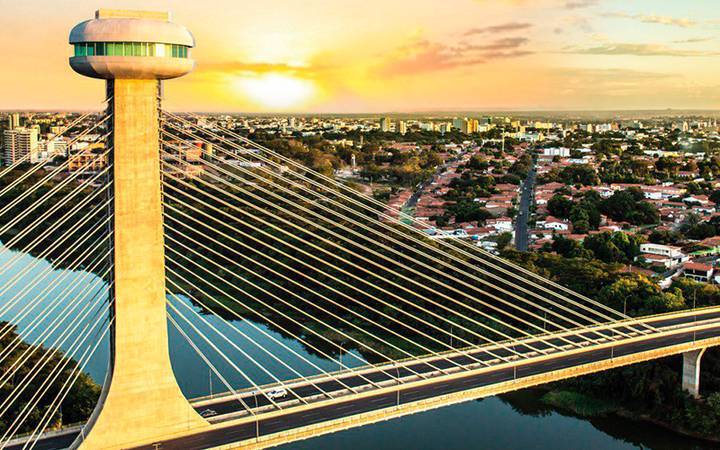Este post também está disponível em:
Português
English

Teresina is located 350 kilometers from the coast, Teresina compensates for the distance from the sea by the presence of the Poti and Parnaíba rivers, which are in charge of cooling the climate of the city, whose average temperature is around 30˚C.
Built in the 18th century, the old Vila do Poti (the current name, in honor of Empress Teresa Cristina, came with the elevation to capital in 1852) stands in a region known as Chapada do Corisco – since lightning often “coriscates” the city’s skies, announcing the arrival of rain.
Teresina is flat, with parallel and perpendicular streets, in an urban layout of easy circulation. Unlike the other northeastern capitals, Terezina receives few tourists.
Videos about Teresina in Piauí

Those who arrive in Teresina from Piauí, however, have the privilege of enjoying more than thirty urban parks, in a center of surprising cultural vitality and lively nightlife, which takes place in its many bars and pubs.
The agenda of events can be obtained at the municipal House of Culture.
View the map of Teresina in Piauí
Tourist Attractions of Teresina in Piauí
1. PEDRO II square
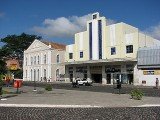
The square is the point of cultural effervescence of Teresina. Epicenter of bohemia and the meeting of artists of the city, it is the 4 de Setembro Theater, built in 1894 and currently opens its doors every week for the presentation of plays for popular prices.
The old Cine Rex, opened in 1939, preserves its original art deco façade.
A must-visit, the Handicraft Center brings together works of popular art, with emphasis on wood carvings, hammocks and opal pieces from the city of Pedro II, as well as buriti furniture signed by Abrahão Cavalcante.
2. CASA DA CULTURA EM TERESINA
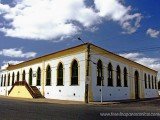
Housed in a well-kept 1870 mansion, the House of Culture preserves the memory of the city through photographs, paintings, coins and other objects organized in seven rooms.
There are also pieces related to the lives of illustrious Teresinans, such as journalist Carlos Castelo Branco (1920-93), who donated his library to the center, available for consultation, and photographer José de Medeiros (1921-90), with an exhibition of his beautiful images.
In the space, where workshops and courses are promoted, you can obtain the program of cultural events in Teresina. Rua Rui Barbosa, 348, Center.
3. MUSEUM OF PIAUÍ IN TERESINA
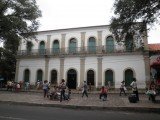
The Museum of Piauí “Odilon Nunes”, founded in 1934, emerged as a section of the Public Archive of Piauí, under the guidance of Professor Anísio Brito.
But in 1980, the building underwent a restoration and became home only to the Museum of Piauí, organized in agreement with the Joaquim Nabuco Foundation of Recife.
The museum is housed in the old mansion of the commendator Jacob Manoel Almendra, built in 1859. This building was a palace of justice and seat of the provincial government and today houses the most important and varied historical collection of the state. There you can find pieces from the prehistoric, colonial, modern and contemporary periods.
There are rooms for visitation with permanent exhibitions on the following themes: “The Land”; “Man – Archeology and Indian”; “Piauí Colony”; “Piauí Empire”; “Old Republic”; “New Republic”; “Sacred Art”; “Popular Art”; “Communications”; “Heraldry”; “Numismatics”; “Pinacoteca”; “Gallery of Governors”. The collection on display today is approximately 2,000 pieces.
The piece that most attracts the attention of its visitors is the canvas of Dom Pedro II, from the year 1875, painted by Victor Meirelles de Lima.
There is also a 16th-century wooden baptismal font that belonged to the chapel of the Santo Inácio marshland (Oeiras national farms). The font was used by the Jesuits to baptize the Indians and is one of the oldest pieces on display.
Another very rare piece of great historical value is a ceramic funerary urn containing the bones of a child dating back approximately 3,000 years.
In October 1999, the museum was renamed the Museum of Piauí “Odilon Nunes”, in honor of the state government to the great historian amarantino, on the occasion of the centenary of his birth. Pça. Mal. Deodoro da Fonseca, s/n , Center.
4. KARNAK PALACE IN TERESINA
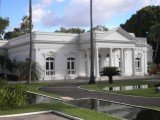
The Karnak Palace is the official headquarters of the Government of Piauí. The palace has a white main façade inspired by classical architecture and its name in a temple of the same name that existed in the Ancients.
It was the residence of the imperial elite and became the seat of government in 1926, by act of the then governor Matias Olímpio.
Under renovation in the 1970s, it expanded the east and west annexes, green hall, meeting hall, press center and won gardens by Burle Marx who designed a water mirror with several species of palm trees such as the native carnauba.
It is close to the São Benedito Church. During Christmas the palace is all decorated and illuminated including the gardens and where the Piauí Symphony Orchestra performs. It is also where various tributes, governor’s lunches, decisions and political meetings take place. Av. Antonio Freire, 1450, Center.
5. CLUB OF DIARIES IN TERESINA
Its lively Carnival dances made history in the 1960s. Today it is a cultural center chosen as a meeting point for writers, visual artists, singers and journalists from Teresina.
It houses the Torquato Neto movie theater, with free screenings at noon. A shop offers the latest releases in CDs and books signed by local authors. Rua Álvaro Mendes, s/n, Center.
5. OFICINA DA PALAVRA EM TERESINA
A cultural space with an art gallery of artists from Piauí, a library, auditorium and classrooms, Oficina da Palavra publishes a poetic calendar every month, a free publication that always features a poet and an artist.
The place also organizes the “Encontros Inevitáveis”, literary-musical soirees promoted on the last Wednesday of each month, starting at 8 pm, focusing on the work of Brazilian and international poets. Rua Benjamin Constant, 1400, Center.
6. On the banks of the POTI River in TERESINA

Every day, at dusk, Raul Lopes Avenue receives hundreds of people in search of fresh breeze and leisure. On the boardwalk on the edge of the Poti River, they run, walk, cycle and date.
When night falls, the kiosks begin to receive businessmen and students for a happy hour that often continues into the night.
The Caneleiro, named after Teresina’s symbol tree, is a pleasant option to try a classic of the city: cold beer with a tasty paçoca (in front of Shopping Riverside).
At Teresina Shopping, tourists will find a good range of services and stores (Av. Raul Lopes, 1000, Bairro dos Noivos).
7. PARK ENCOUNTER OF THE RIVERS IN TERESINA
The park was created exactly at the point where the Parnaíba River meets the Poti River, before continuing its journey towards the coast. A large statue of the fisherman Crispim – the “Cuia Head”, a character from Piauí folklore, who, according to legend, is condemned to wander the river until he manages to devour seven virgins called Maria – stands on the site.
Leafy trees line the Parnaíba, where you can see the colorful canoes of fishermen from the Poti Velho neighborhood casting nets into the water. Av. Boa Esperanҫa, s/n, Poti Velho.
8. VIOLEIROS – VIOLERS
At night in Teresina, violeiros often play in bars and restaurants, in performances that extend throughout the night.
The Casa do Cantador, a simple wooden bar surrounded by leafy mango trees, serves as a meeting point for all of them. Musical gatherings take place every night, but are most popular on Wednesdays (Rua Lúcia, 1419, Vermelha).
Tourism and Travel Guide to Teresina in Piauí

